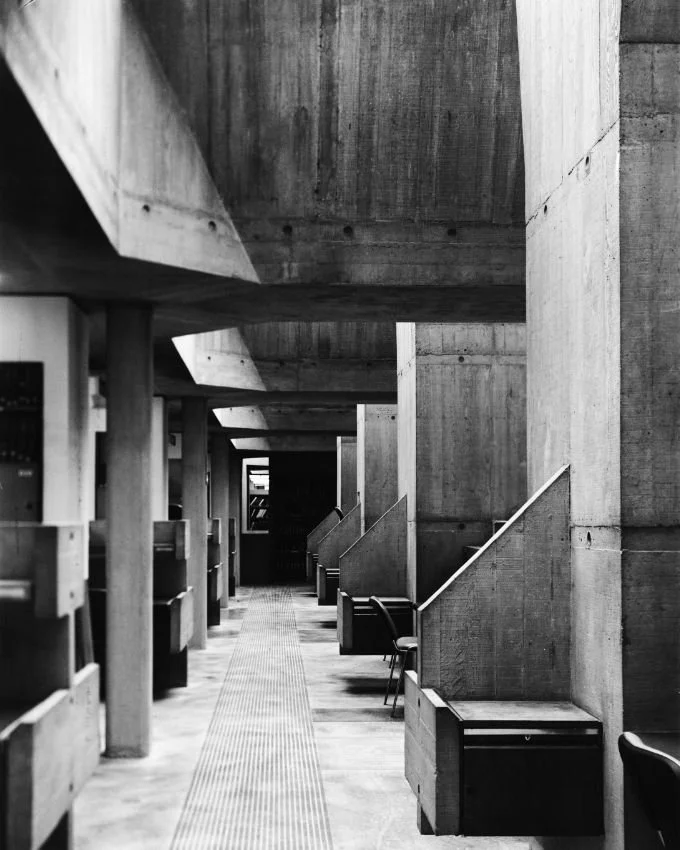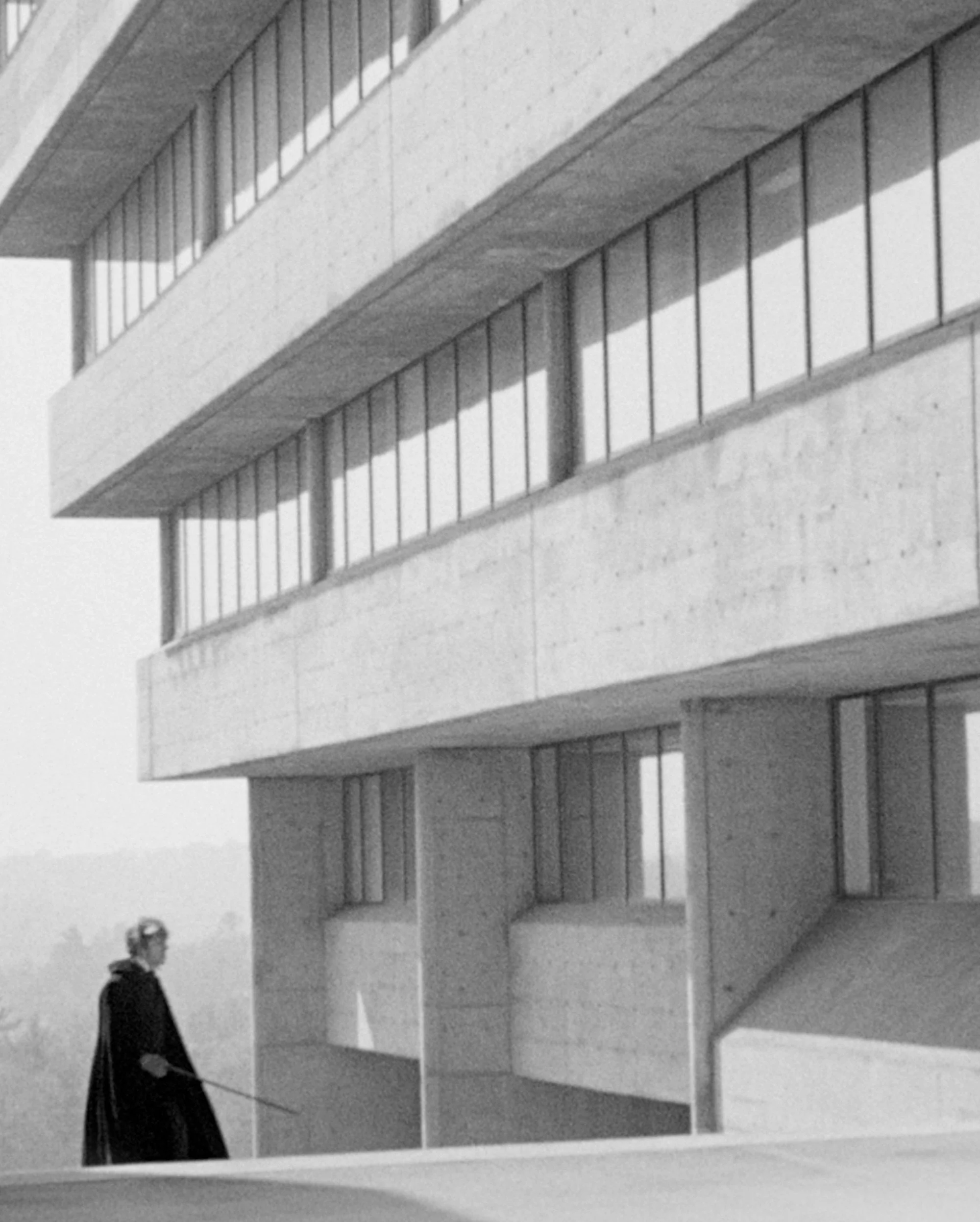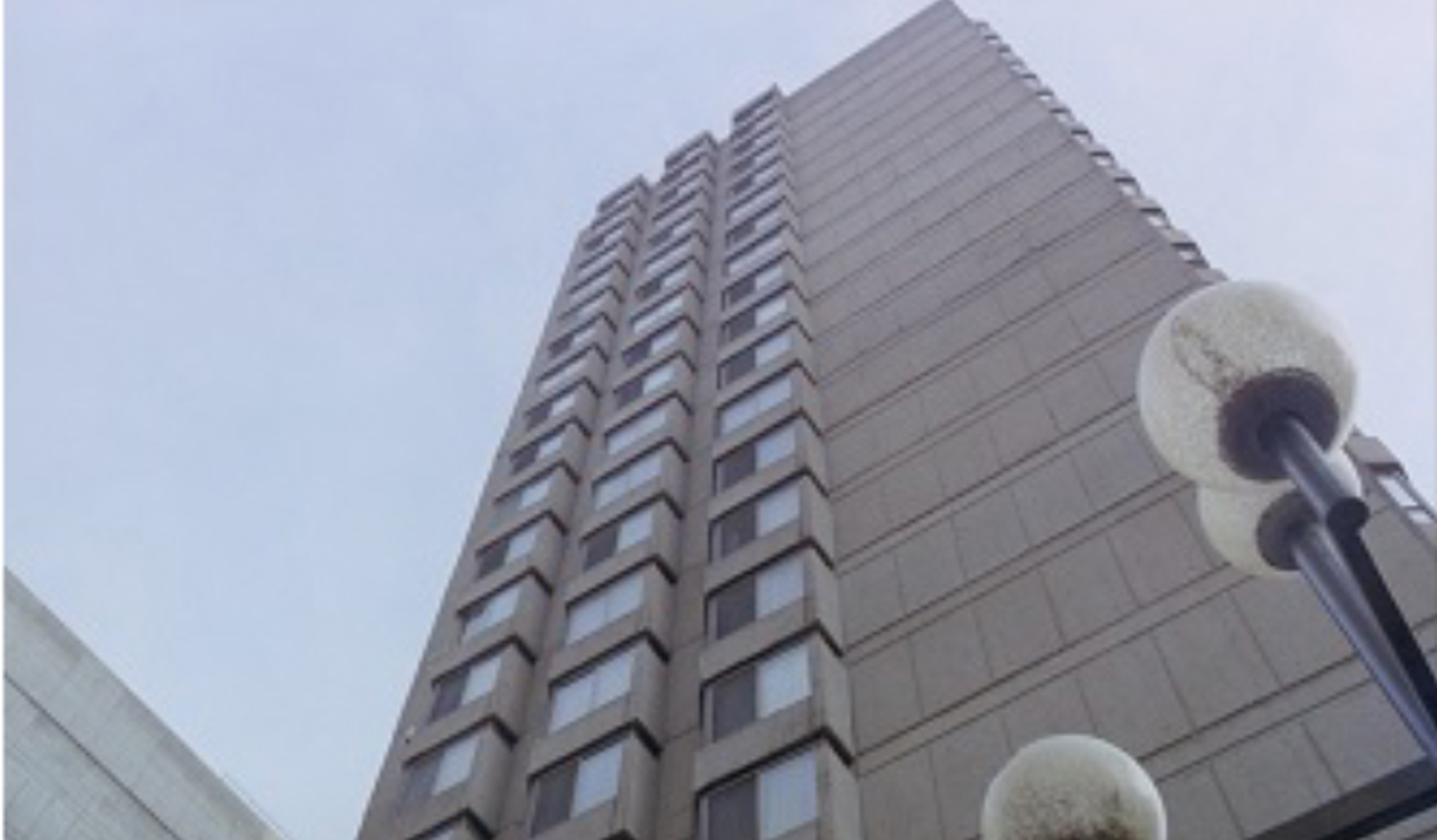Architecture of the Body
The release of Brady Corbet’s Oscar-winning The Brutalist saw Brutalism brought into the cinematic spotlight, but some filmmakers have always sought to place architecture at the heart of their films. In our latest blog post, AP Wallis looks back on the early films of David Cronenberg.
Corbet’s film attracted controversy during the build up to the Academy Awards when it was revealed he had used AI software to enhance lead actor Adrien Brody’s accent. The use of AI is a contentious issue in all art forms, but for David Cronenberg – the Canadian auteur whose films often deal with transformative technologies – he didn’t see an issue. “We mess with actors’ voices all the time”, he said. “This is just a part of moviemaking”. His defence of The Brutalist is even more understandable when we consider how much Cronenberg has used - and been influenced by - architecture, particularly during the early stages of his incredible career.
Long before he released The Fly, Dead Ringers, or A History of Violence, Cronenberg was an English Literature student at University of Toronto, at the beginning of a lifelong fascination with film as an art form. He was enrolled there when construction of the iconic Science and Humanities Wing of Scarborough College began.
University of Toronto Scarborough
Designed by John Andrews, the Australian architect also responsible for Toronto’s CN Tower, it opened in 1966 and was immediately hailed by architecture critics for its Brutalist design and forward-thinking aesthetics, gathering global attention and featuring on the cover of Time magazine in January 1967. Cronenberg was there and he took notice.
Interior of UoT Scarborough
Stereo
Stereo (1969) is one of his earliest films and was shot entirely at UoT Scarborough. An experimental short where Cronenberg is less interested in narrative and character, and more concerned with constructing a vibe with gorgeous black and white photography. It feels inaccessible today, as cold as the concrete surroundings, an impenetrable amateur film that nevertheless intrigues and excites with hints at themes that Cronenberg would repeatedly return to; telepathy, scientific experiments gone awry, and sexual desire.
Ronald Mlodzik - a regular sight in Cronenberg’s films - in Stereo (1969)
The film was shot in silence with only an intermittent voice-over to guide the viewer, and as a result the architecture dominates the screen. The cold concrete removes us from the trauma of the experiment’s participants, an unforgiving space, distant and detached. Cronenberg’s preoccupation with scientists altering the human body – corporate entities interfering with the architecture that we inhabit – feels prevalent already this early in his career.
Stereo’s impact owes a huge debt to the designs of John Andrews. The Science and Humanities Wing of UoT Scarborough would go on to be used by filmmakers again and again throughout subsequent years, most notably by Dutch auteur Paul Verhoeven in his sci-fi classic Total Recall. Guillermo del Toro shot sequences for The Shape of Water there, and another landmark Canadian director, Denis Villeneuve, opted to use UoT for scenes in Enemy.
Meanwhile, Cronenberg soon found himself at Cannes Film Festival, experiencing something of an epiphany. His short films up to this point had been art first and foremost, uninterested in the audience, unwilling to be palatable. He soon realised that this uncompromising approach wouldn’t pay the bills, and if he wanted to make a career out of filmmaking, he would have to start catering for audiences and selling tickets at the box office.
Inspired by the B-movie film factory of Roger Corman, Cronenberg returned to Canada and quickly identified the horror genre as a way into mainstream filmmaking. Relatively cheap to make, they put bums on seats but also gave Cronenberg the opportunity to explore themes that he was already obsessed with. He could scratch that artistic itch while earning some cash.
Shiver’s poster from 1975
Shivers
And so Shivers (1975) was born. Cronenberg’s original script was titled “Orgy of the Blood Parasites”, and that tells us precisely what market the film was aiming at. It’s an unashamedly B-movie horror flick, an unsettling story of a scientist’s botched experiments leading to a pandemic of orgiastic sexual desire. For the first time, Cronenberg explores a theme he would forever be associated with: “body horror”.
Shivers takes place entirely inside one apartment building, and the Modernist design and glorious 1970s décor are as much part of the film as the parasites. The building, “Starlight Towers”, is advertised to prospective residents as modern luxury under one roof with everything you could need inside. With “downtown Montreal only twelve and a half minutes away” it provides a neat, safe, and orderly space where you can escape city life– but this idyllic vision is wrecked with glee by Cronenberg, who contrasts the sleek architecture with grotesque violence to invoke claustrophobic (yet stylish) dystopia.
Like Stereo, the building in Shivers is an intrinsic part of the fabric of the film, as important as any character. Cronenberg needed a building that reflected the film’s modern ideals, and he found one in Tourelle-sur-Rive, a Modernist apartment block on Nuns’ Island, Montreal. Designed by the legendary architect Ludwig Mies van der Rohe (commonly known simply as Mies) and built in 1962, it gave Cronenberg exactly what he needed.
Tourelle-sur-Rive today
Mies was born in Germany and by the 1930s was already seen as a key proponent of Modernism, the last director of Bauhaus before the Nazis swept all that away. Fleeing to safety in the United States, he quickly became established as a leading architect, designing Modernist buildings all over the US, including the Seagram Building in New York and the Martin Luther King Jr. Memorial Library in Washington DC.
If his story sounds familiar, that’s because his life was one of the inspirations for László Tóth, the protagonist in The Brutalist. Played by Adrien Brody, Tóth is an architect trained at Bauhaus who survives the Holocaust before settling in the US in pursuit of the American Dream. Tóth is an amalgamation of various influences, rather than based on one person, but Mies’ life is an important piece of that puzzle.
Rabid & Scanners
For Cronenberg, however, his post-Shivers output saw him immediately dive further into genre filmmaking, directing cult classics Rabid (1977) and Scanners (1981). Also shot in Montreal, his preference to shoot on location meant that many Modernist and Brutalist examples of the city’s architecture featured prominently.
Mindy's apartment in Rabid
In Rabid, Cronenberg returned to the idea of a sexualised pandemic caused by science, but this time on a much larger scale. Arguably more accomplished than Shivers, its premise became a central theme of the body horror genre – an invasive force takes over the human body, causing the victim to lose control of their consciousness and, in this case, their inhibitions. Sex is dangerous and threatening amongst the Canadian concrete.
In Scanners, the mind is the focus of the invasions, rather than the body itself. Powerful telepaths are created by (you guessed it) science gone badly wrong, when a mass-produced medicine from an uncaring, faceless corporation creates a mutation in humans. Of course, the headquarters had to look the part, and Cronenberg knew where to find it.
The home of ConSec in Scanners, where battles are decided in boardrooms
Later in life, Cronenberg expanded his horizons and moved away from genre filmmaking. He branched out further, leaving behind the rough, often sleazy, feel of his earlier films. They still astonish years later and have become firm favourites amongst film fans, however, and its no surprise that when he spoke up in defence of The Brutalist, people took notice.
further reading
https://en.wikipedia.org/wiki/University_of_Toronto_Scarborough





